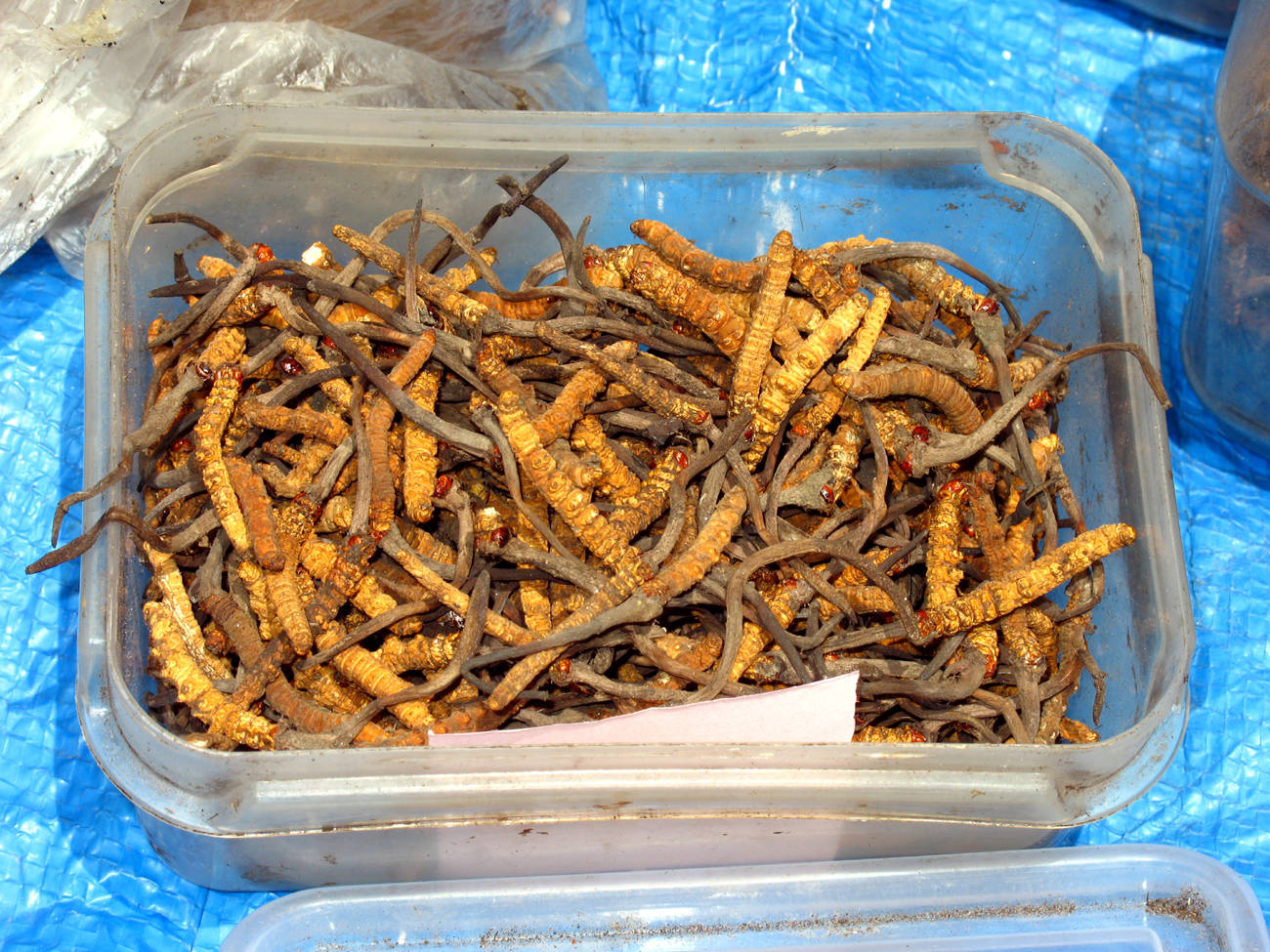
Local name: Yartsa Goenbub
Edibility: Popular in traditional Himalayan medicine.
Habitat: On larvae (Lepidoptera: Hepialidae) buried in soil.
Description: Stroma: Grey to grey-brown, usually solitary (rarely 2), up to 80 mm long, 1.0-1.5 mm across. Perithecial head: Sub-terminal, cylindrical, brown to blackish-brown up to 15 mm long x 3.5-4 mm across which is pinkish red to salmon pink or orange-yellow, 5-20 mm long x 3-5 mm wide. Perithecia: Superficial, ovoid, up to 450 µm long x 200-250 µm wide. Ostioles: Obscured. Asci: Cylindric, up to 300 µm long x 10-12 µm diam., 8-spored. Ascospores: Filiform, whole, hyaline, up to 90 µm long x 1.5-2 µm wide.
Comments: This is the most well-known insect fungus in Bhutan thanks to the high value it can command in markets. In Bhutan it is found above the tree-line (4000 masl) usually from 4300-4800 masl. It is commonly found throughout the Himalayan-Tibetan plateau region from Nepal through Sikkim and into Bhutan as well as north into Tibet. The immature specimens can appear from mid May onwards (depending on temperature) and collection is allowed throughout June. By the end of July the perithecial head begins to develop and the specimens lose value in the market place because of this. However, it is these specimens which when left in the ground and not picked will produce the spores that will infect the next generation of hepialid hosts.



